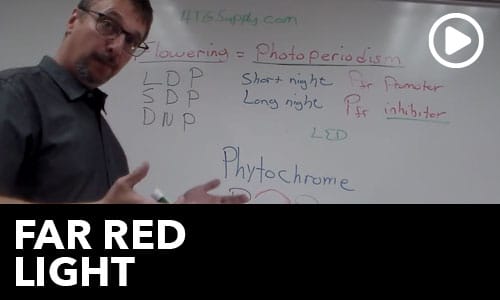Which grow light is best – HPS grow lights or MH grow lights – is perhaps the most common questions among those new to indoor gardening or HID grow lights. Ironically, most HID grow light enthusiasts recommend using both MH and HPS grow lights. MH grow lights (metal halide) are suited best for vegetative growth and HPS grow lights are superior for flowering. While either type can be used for the full growing cycle, when combined, using an MH grow light for vegetative growth and flowering under an HPS grow light is the most recommended HID grow light setup because utilizing the strengths of both types at the right times produces the best results. If you’re forced to make a choice between the two types, your decision should be based mostly on the type of plants you’re planning to work with.
To understand more about the differences between HPS grow lights and Metal Halide grow lights, keep reading!
HPS Grow Lights
HPS (High Pressure Sodium) Grow Lights are a specific type of HID (high intensity discharge) grow light often associated with a reddish / orange-ish output. If you have ever seen a friend’s indoor grow light and noticed it had a red/orange appearance, it is likely an HPS grow light. You may have also seen HPS lights used in parking lots and street lights because they provide a lot of illumination and they’re brighter than fluorescent lighting. While HPS lights are also used for general lighting applications, high-quality HPS grow lights are engineered specifically to grow plants and put out even more light than standard HPS lighting.
There are basically two main factors that contribute to HPS being a better option for flowering than MH. First, the reddish output of HPS more closely resembles the natural sunlight a plant would absorb in the autumn seasons, which drives the plant’s maximum flowering production. In addition, HPS lights provide higher light intensity (lumens) than MH. This can be around 25-40% more lumens/watt than MH lights of the same wattage, and when it comes to flowering; the more light – the better the results.
Today’s best HPS grow lamps (bulbs) also offer a refined output or enhanced spectrum with higher blue range output to assist with vegetative growth. HPS grow light bulbs also maintain their brightness better and last longer overall than MH, although they still become less efficient towards the end of their lifespan and should be replaced before they burn out completely. The general recommendation is to replace HPS grow lamps after 12-18 months of regular use.
Metal Halide Grow Lights
Metal Halides are another specific type of HID grow light. Instead of giving off a reddish light like their HPS counterparts, MH grow lights supply plants with a crisp, sometimes bluish white looking light. Also referred to as “full-spectrum”, the output of metal halide lights is more evenly distributed across the visible light range like midday sunlight. The balanced spectrum of MH produces lush, compact vegetative growth that will support big yields when plants are ready to flower, whereas plants that receive too much red light during the vegetative stage can become spindly and develop fewer flowering sites. In the same respect, this also makes an MH light a better option for those growing kale or other vegetative crops such as lettuce or basil.
Two main types of MH grow light bulbs are commonly available to growers: 1) Standard metal halide bulbs, which must be operated on metal halide ballasts or digital ballasts, and 2) metal halide conversion bulbs which must be operated on standard high pressure sodium ballasts or digital ballasts. Metal halide conversion bulbs that operate on HPS ballasts or digital ballasts have the same type of full-spectrum output as standard MH bulbs and usually have the added benefit of a higher lumen rating.
Metal Halide lamp construction lends itself to color customization much more so than HPS lamp construction, therefore growers can find a wider variety of light outputs available with Metal Halide bulbs. There are specialized “Blue” MH grow lights that produce more light energy in the blue spectrums but less in other spectrums, and there are also MH grow light bulbs with increased red spectrum that are designed to mimic the output of HPS lights. HPS-like MH bulbs are still simply not as effective as having a full-fledged HPS light to flower your plants under though due to the significant difference in light intensity.
In Conclusion
If you are growing vegetative harvest crops such as leafy greens or herbs, you may want to just stick with MH grow lights. If you are growing plants that flower and your budget only permits one grow light bulb for the full grow cycle, we recommend going with an enhanced-spectrum HPS because it still provides good vegetative growth and the higher intensity tends to produce better yields. Otherwise, it’s not a matter of whether HPS or MH is better for modern HID (high intensity discharge) growers. Simply put, if you are going to grow under an HID grow light setup and you want the best yields, you should utilize a grow light setup that will allow you to switch your bulbs out or just have separate grow lights or even rooms setup to allow you to switch from vegetative growth to flowering. Many of today’s best HID grow lights will allow you to use MH, MH conversion, or HPS lamp types, meaning you can have the same ballast and fixture but switch out the bulb when it comes time to start the flowering process.


